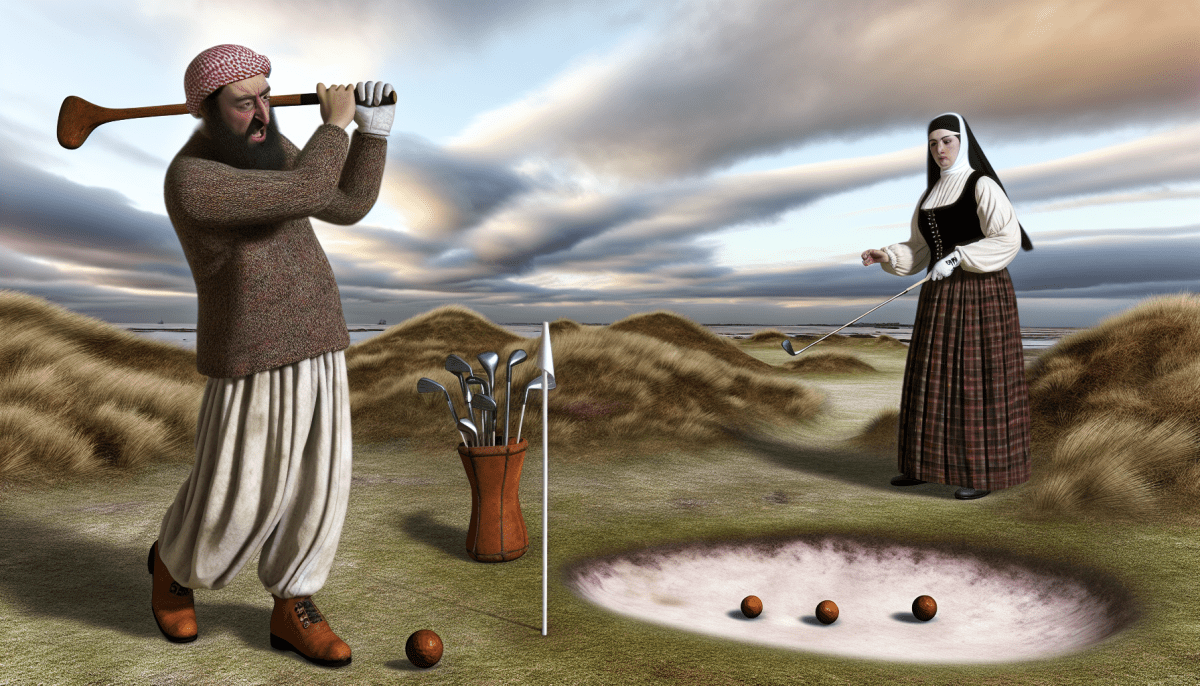Golf has a rich history that dates back centuries, and its origins can be traced to ancient times. The game is thought to have started in the regions now known as Holland and Scotland, where similar games involving hitting balls with sticks were played. In the 13th century, records show that a game resembling golf was played with a wooden stick and a leather ball, and people enjoyed it in the fields and on coastlines.
One of the earliest references to golf-like games comes from a 1297 ordinance in Scotland, which discouraged the practice of playing 'golf' and 'football' as they distracted soldiers from practicing archery. This reveals that the sport had already taken root in Scottish culture, making it an integral part of their recreational activities.
In the 15th century, golf began to formally take shape, particularly in Scotland. The famous Old Course at St. Andrews, which many consider the birthplace of golf, started to gain popularity among players. The course was essentially a natural terrain used by locals, which helped to establish rules and promote the idea of a structured game. This laid the groundwork for golf as we know it today.
Throughout the years, golf further evolved, influenced a bit by different cultures and the introduction of various equipment. The small wooden balls and sticks transformed into the modern clubs and balls that players use today. Even back then, the thrill of sinking a putt or making a long drive captured the hearts of many, setting the stage for golf’s evolution into the beloved sport we know now.
The Rise of Golf in Scotland
Golf has deep roots in Scotland, with its history stretching back to the Middle Ages. The exact origins are a bit fuzzy, but many agree that the game began to take shape on the Scottish coastlines, particularly around the 15th century. Players used sticks to hit a ball toward a target, which laid the groundwork for the modern game we know today.
One of the key moments in the rise of golf in Scotland was the development of the Old Course at St. Andrews. Established around 1400, this course is often referred to as the "Home of Golf." Its unique layout, with natural hazards like burns and bunkers, helped define how the game would evolve. Golf became increasingly popular among the Scottish nobility, who saw it as a leisure activity that encouraged camaraderie and competition.
The sport's popularity boomed in the 18th century when the first official rules of golf were codified. The Society of St. Andrews Golfers formed in 1754, marking a significant step in organizing the sport. This group set universal standards, and they even created the first 13 rules of golf, helping to unify different styles of play across Scotland.
As the 19th century rolled in, golf expanded beyond Scotland's borders. The first golf club outside Scotland was established in England, but the Scottish influence remained strong. Golf's charm and challenge began attracting players from around the world, solidifying Scotland's status as the cradle of the sport.
Golf Goes Global in the 19th Century
The 19th century was a turning point for golf, as it began to shed its regional roots and spread across the globe. While Scotland remained its heart, where the rules were honed and the first official courses were established, the sport started catching fire elsewhere. More and more people were drawn to the game, eager to take their swings on the green.
Across the Atlantic, the United States saw golf take hold, particularly in the northeastern states. The first golf club, the St. Andrews Golf Club, was established in New York in 1888. It wasn’t long before golf courses began popping up, giving enthusiasts plenty of options to enjoy the sport. Social clubs embraced the game, turning it into a chic pastime for the wealthy.
Meanwhile, in Europe, countries like England and France were also embracing golf. The formation of golf clubs and the organization of tournaments became more common. The British Open, which started in 1860, became a highlight for players and fans alike, further fueling the passion for the sport.
With golf's rise in popularity, equipment also improved. Golf balls evolved from feather-filled to solid varieties, and clubs got sturdier. This accessibility allowed more everyday folks to give it a go, leading to a surge in players. By the end of the century, golf was well on its way to becoming the global phenomenon we know today.
Modern Golf Trends and Innovations Today
Golf is always evolving, and today’s game is filled with exciting trends and innovations that both beginners and pros can appreciate. One of the most noticeable changes is the way technology has enhanced everything from clubs to balls, making the game more enjoyable and accessible.
For starters, golf clubs are now equipped with advanced materials and designs that help players achieve greater distance and accuracy. Think lighter weights and improved aerodynamics. It’s all about finding the perfect fit for your swing style. Many players now turn to club fitting services, where experts help them select the best clubs tailored to their individual needs.
Another big trend is the rise of smart technology in golf. From rangefinders that give you the exact distance to the hole, to apps that track your performance, tech is making it easier than ever to improve your game. You can analyze your swings, compare your stats, and fine-tune your techniques all with just a few taps on your phone.
The appearance of golf at urban courses and pop-up events is also a fresh take on the classic game. Mini-golf setups and driving ranges in city parks are attracting a new crowd, especially younger players. It’s about making golf more fun and less formal, encouraging people to swing a club without the traditional pressures of the golf course.
Finally, sustainability is becoming a key focus in the golf industry. Many courses are adopting eco-friendly practices, like using less water and incorporating native plants. This not only helps the environment but also enhances the natural beauty of the courses, making your round even more enjoyable.



